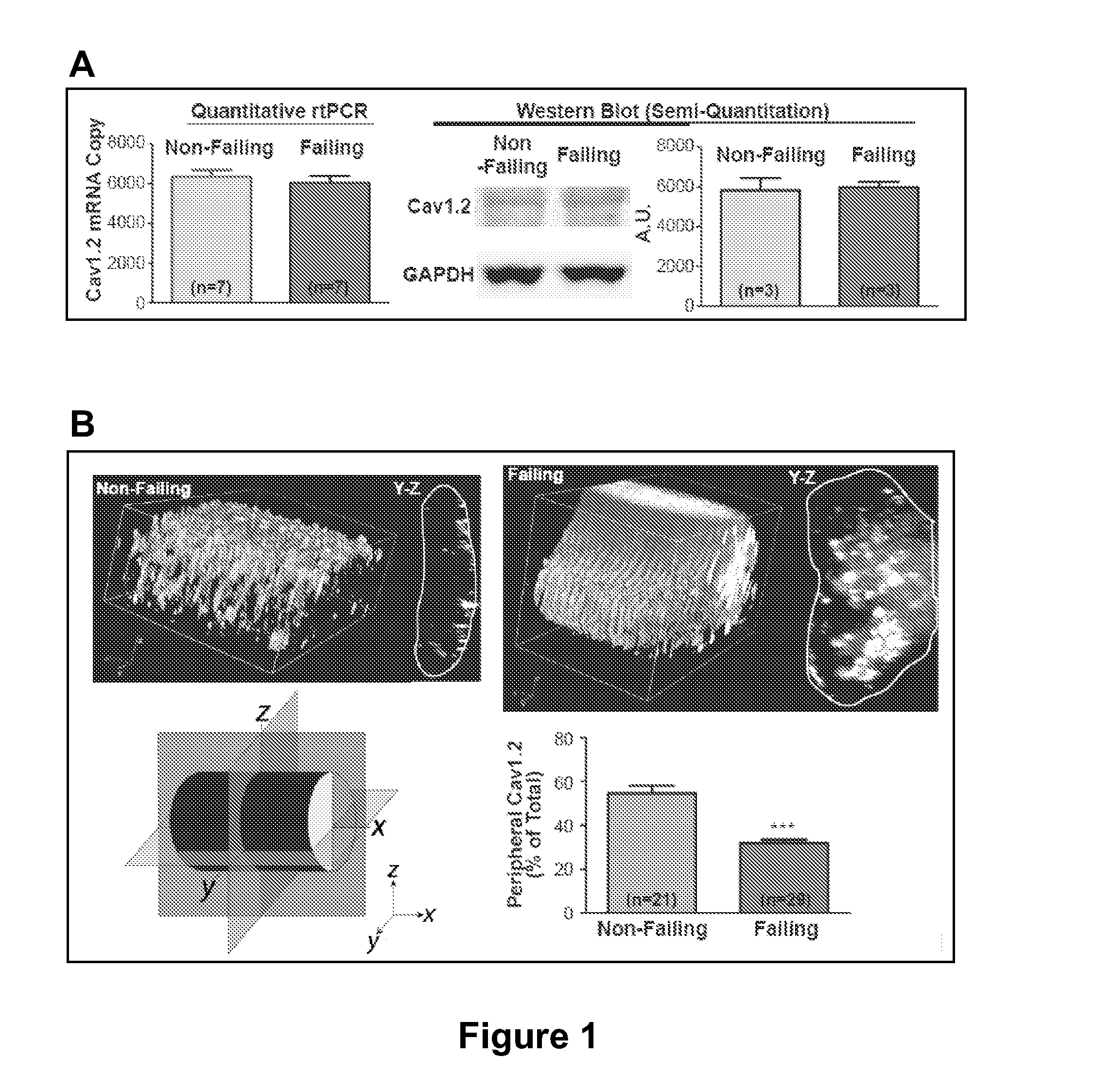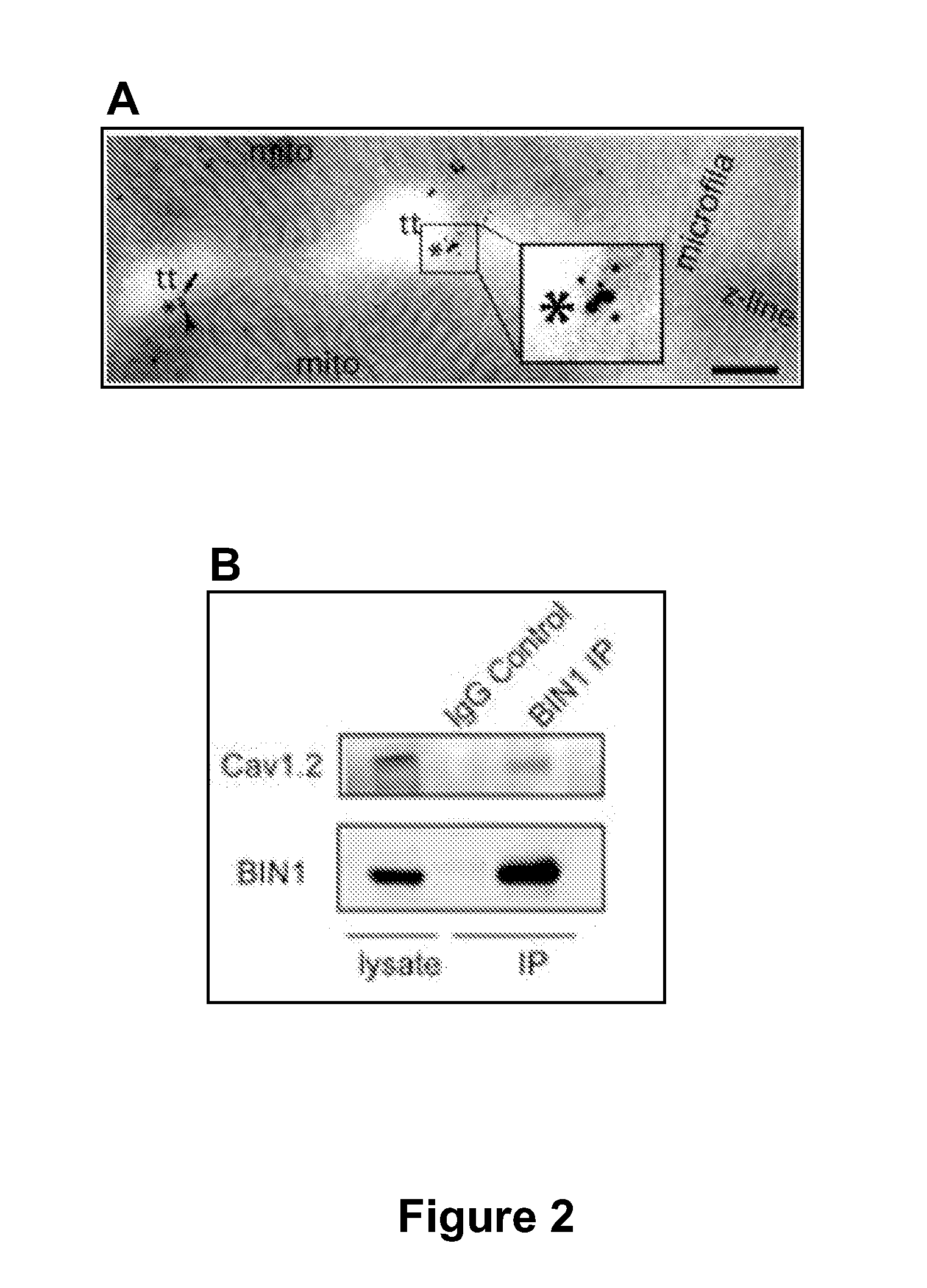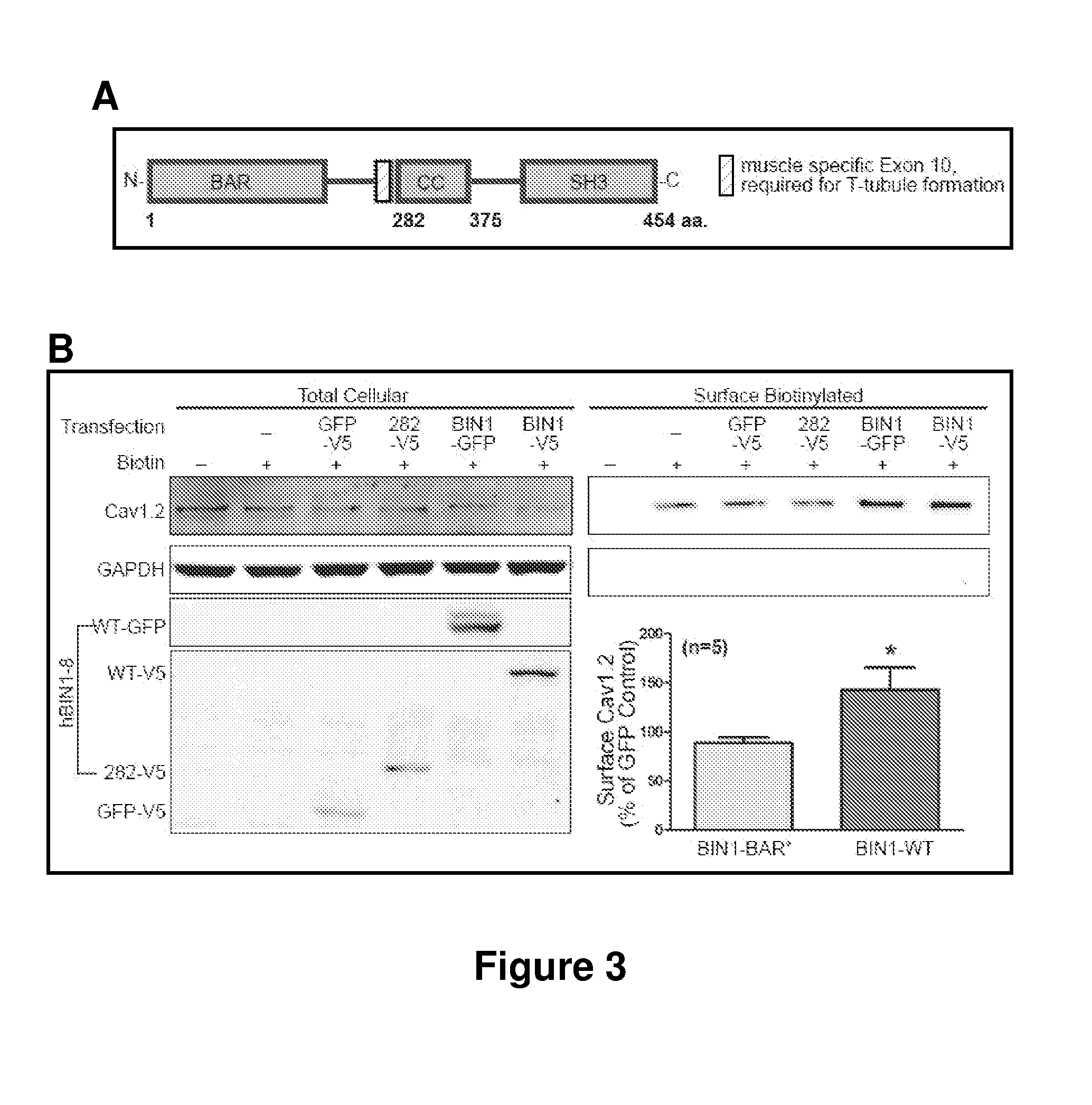Bin1 as a prognostic marker in cardiovascular disease
a prognostic marker and cardiovascular disease technology, applied in the field of cardiovascular disease, can solve the problems of cardiac mortality, poor outcome, 2000 hearts available, etc., and achieve the effect of increasing the risk of poor outcom
- Summary
- Abstract
- Description
- Claims
- Application Information
AI Technical Summary
Benefits of technology
Problems solved by technology
Method used
Image
Examples
example 1
CaV1.2 Has an Intracellular Distribution in Failing Heart
[0148]Cardiac excitation-contraction (EC) coupling, a process essential to each heartbeat, links electrical excitation of the myocyte to its mechanical contraction. EC coupling begins with local calcium entry through CaV1.2 channels that then causes a large release of calcium by the intracellular sarcoplasmic reticulum (Fabiato, 1983). Ryanodine receptors on the sarcoplasmic reticulum (SR) are the local calcium sensors and release channels (Cheng et al., 1993; Inui et al., 1987; Pessah et al., 1985). In ventricular cardiomyocytes, close association of CaV1.2 channels and ryanodine receptors is necessary for efficient calcium-induced-calcium release (CICR) (Bers, 2002). Synchronous CICR occurs at the EC-couplons, where 10-25 L-type calcium channels and 100-200 ryanodine receptors coincide and cooperate with each other (Bers, 2001). In order to locally approximate the SR bound ryanodine receptors, CaV1.2 channels are necessarily...
example 2
BIN1 Targets CaV1.2 to T-Tubules
[0152]The mechanism of CaV1.2 targeting to T-tubule membranes was explored. Co-staining of BIN1 and CaV1.2 in both isolated non-failing human cardiomyocytes and mouse cardiomyocytes indicates that BIN1 outlines T-tubules and CaV1.2 is enriched along such invaginations and colocalizes with BIN1. For higher resolution imaging, transmission electron microscopy with dual immunogold labeling was used to identify CaV1.2 and BIN1 on T-tubule ultrastructures in adult mouse cardiomyocytes. A representative image in FIG. 2A indicates that BIN1 (small 10 nm dots) and CaV1.2 (large 15 nm dots) are enriched and cluster within 10-50 nm of each other, occurring at T-tubular membrane structures.
[0153]Given that CaV1.2 is closely associated with the tubulogenesis protein BIN1 at T-tubules, it is possible that BIN1 specifically attracts delivery of CaV1.2 to T-tubules. This possibility was tested using the reductionist approach of studying the association between BIN1 ...
example 3
CaV1.2 is Targeted to BIN1, not T-Tubules
[0155]It was determined whether it is BIN1 protein or T-tubule structures that is sufficient for CaV1.2 targeting. Wild-type BIN1 (BIN1-WT, 1-454aa) has an N-terminal BAR domain followed by 15 amino acids (aa) encoded by exon 10 which is required for phospholipid binding and T-tubule formation, a coil-coiled linkage domain, and a C-terminal SH3 domain for protein-protein interaction (FIG. 3A) (Lee et al., 2002; Nicot et al., 2007). A previously published C-terminal truncated BIN1-BAR* (1-282aa, BAR+Exon10), which retains the ability to induce membrane invagination was created (Lee et al., 2002). BIN1-BAR* cannot attract endogenous CaV1.2 to the nascent T-tubule structures such as those in HL-1 cells. In an HL-1 cell transfected with BIN1-WT, endogenous CaV1.2 is distributed along BIN1 structures. In contrast, in cells transfected with BIN1-BAR*, CaV1.2 shows poor colocalization with the BIN1 structures. The effect of BIN1-WT and BIN1-BAR* on ...
PUM
 Login to View More
Login to View More Abstract
Description
Claims
Application Information
 Login to View More
Login to View More - R&D
- Intellectual Property
- Life Sciences
- Materials
- Tech Scout
- Unparalleled Data Quality
- Higher Quality Content
- 60% Fewer Hallucinations
Browse by: Latest US Patents, China's latest patents, Technical Efficacy Thesaurus, Application Domain, Technology Topic, Popular Technical Reports.
© 2025 PatSnap. All rights reserved.Legal|Privacy policy|Modern Slavery Act Transparency Statement|Sitemap|About US| Contact US: help@patsnap.com



